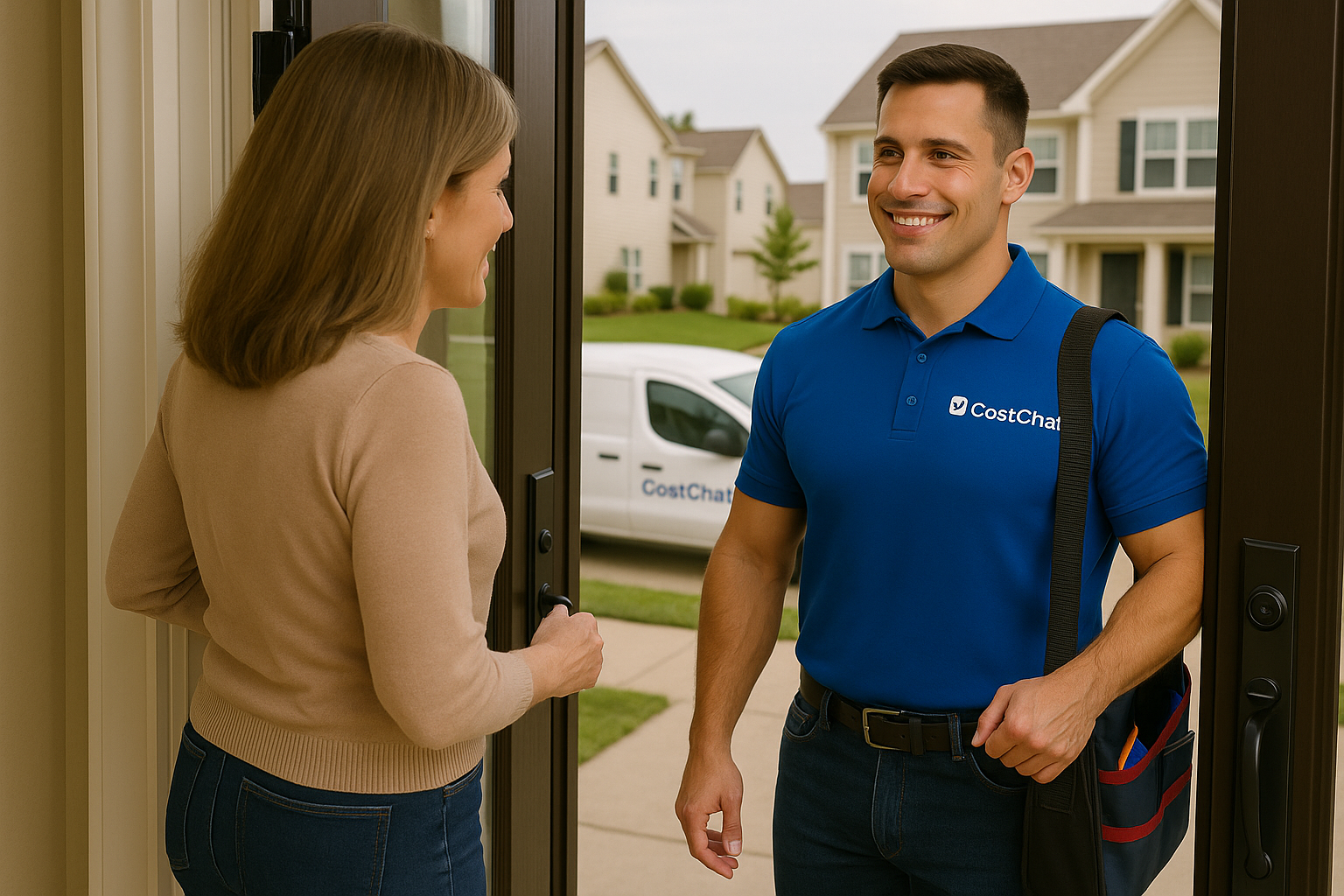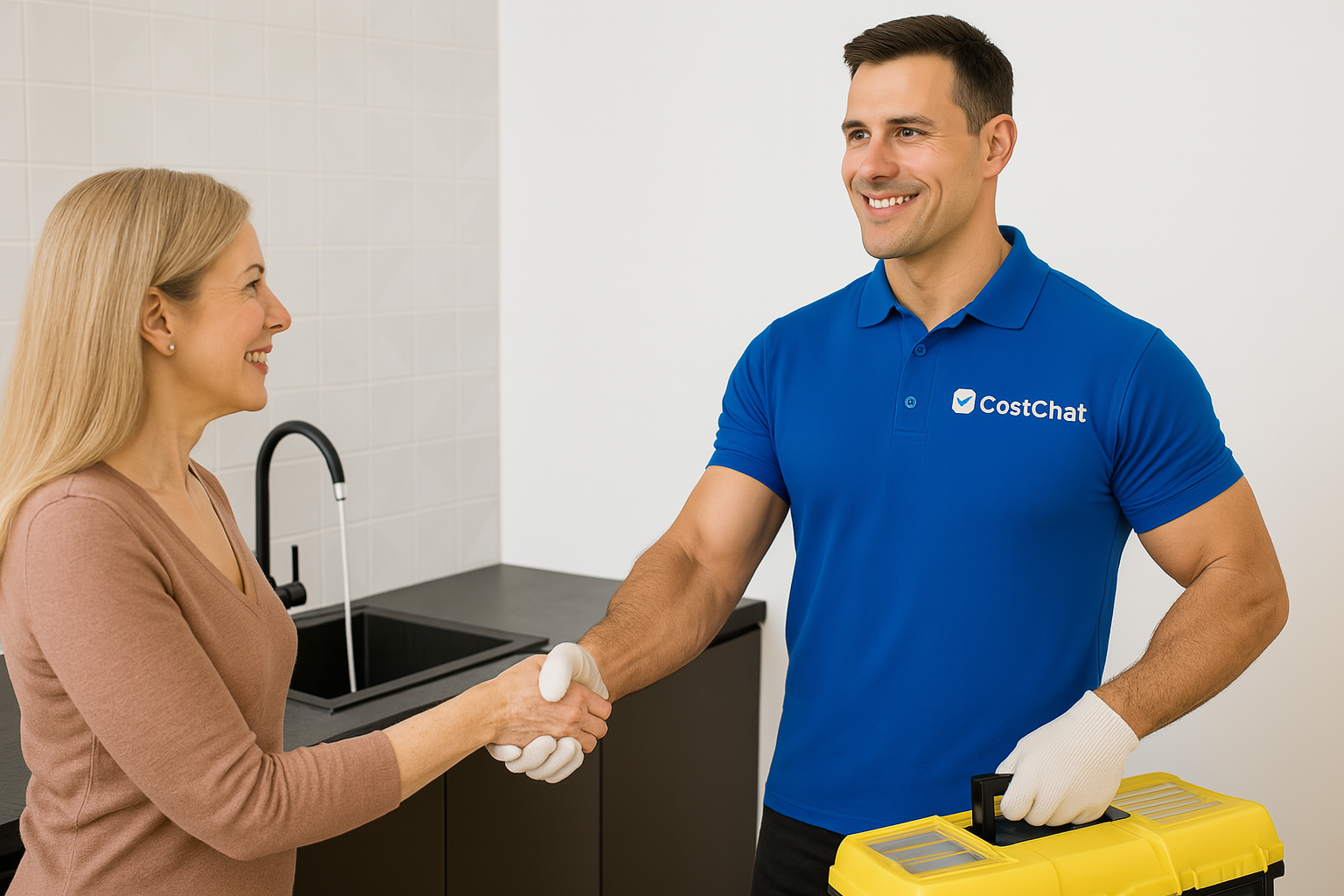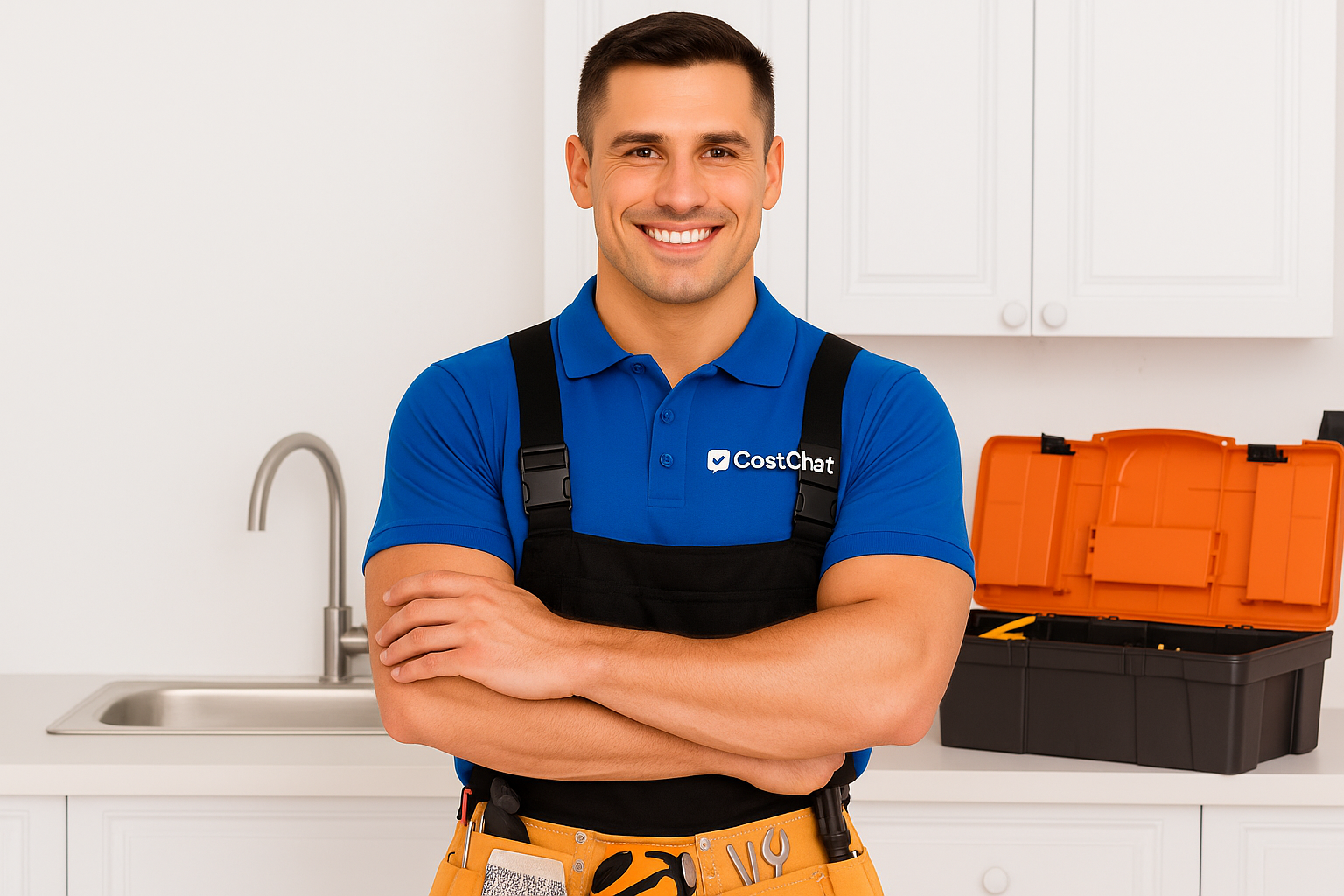
Fast, Reliable Shower and Tub Installation Pros in Cincinnati, OH
How to Hire Top Rated Shower and Tub Installation Pros in Cincinnati, OH
Get a Free Online Estimate
Share your project details and receive a free online estimate from top-rated local pros. Not sure what it should cost? Check our Cost Guide.
Get EstimateCompare Local Quotes
View multiple free online quotes side by side. Use our Price Guide to understand labor rates, materials, and service fees before you hire.
Compare NowBook Best Top Rated Pros
Choose a licensed pro with confidence. Lock in your date after reviewing your free estimate and browsing our expert Cost Guide for peace of mind.
Book NowDid You Know?
74% ⚠️
of homeowners face surprise costs and delays — mostly from hiring unvetted pros. Don’t risk it. Hire trusted experts today.
Hire Top Rated & Verified ProsWork With Verified & Trusted Pros 🛡️
Save time, avoid costly mistakes, and experience reliable, top-quality service for every home project. Book now for priority scheduling and peace of mind.
Hire a Top Rated ProGet Instant Online Estimate of Shower and Tub Installation in
🔎 CostChat Online Cost Estimator
Describe your project and location to get an instant estimate.
Your Comprehensive Shower and Tub Installation Guide for Cincinnati, OH Homeowners
Embarking on a shower or tub installation project in Cincinnati, OH, is a significant step towards enhancing your home's comfort, functionality, and aesthetic appeal. We understand that navigating this process can feel complex, especially with Cincinnati's unique blend of historic charm and modern living. This guide is crafted to be your most trusted resource, providing granular, locally-specific insights to empower you through every stage of your shower and tub installation journey, ensuring a result that is both beautiful and built to last.
Table of Contents
- Cincinnati, OH's Unique Shower and Tub Installation Landscape
- Neighborhood Hotspots: Micro-Local Shower and Tub Installation Risks & Solutions
- Common Problems & Triggers for a Professional Shower and Tub Installation Call
- Navigating Cincinnati, OH's Regulations: Permits, Code & Professional Licensing
- Maximize Your Savings: Cincinnati, OH Shower and Tub Installation Rebates & Incentives
- Choosing Your Cincinnati, OH Shower and Tub Installation Component: Models, Sizing & Smart Features
- Cost of Shower and Tub Installation in Cincinnati, OH
- Hiring Cincinnati, OH's Top-Rated Shower and Tub Installation Professionals
- FAQs About Shower and Tub Installation in Cincinnati, OH
Cincinnati, OH's Unique Shower and Tub Installation Landscape: Why Local Expertise Matters
Cincinnati, OH Homes: A Shower and Tub Installation-Related Time Capsule
Cincinnati, OH, a city with a rich history and a population of approximately 312,000 within its 79 square miles, boasts a diverse housing stock that significantly impacts shower and tub installations. Many neighborhoods feature homes from the early to mid-20th century, characterized by architectural styles like Craftsman bungalows, Colonial Revivals, and post-war suburban homes. These older homes, particularly in areas like Hyde Park, Oakley, and Mount Adams, often present unique plumbing challenges due to their original materials and construction methods.
Plumbing Challenges & Infrastructure in Cincinnati Homes:
- Galvanized Steel Pipes: Common in homes built before the 1950s, these pipes are prone to internal corrosion and mineral buildup. This can lead to reduced water pressure and potential leaks, which are critical considerations when planning a new shower or tub installation.
- Cast Iron Drains: Often found in older constructions, cast iron drains can deteriorate over time, causing blockages or leaks. Upgrading these during a bathroom renovation is frequently necessary.
- Slab Leaks: Homes with concrete foundations can be susceptible to slab leaks, exacerbated by Cincinnati's soil conditions and ground movement.
- Repiping Needs: Remodeling older homes may expose vulnerabilities, often necessitating repiping with modern materials like PEX or copper for enhanced reliability and safety in new shower and tub installations.
Cincinnati, OH's Environmental & Utility Factors & Climate Impact on Your Shower and Tub Installation
Cincinnati's humid continental climate, with cold winters and warm, wet summers, directly influences the performance and longevity of your shower and tub installation components. The city's exposure to freeze-thaw cycles in winter requires careful attention to pipe insulation, especially in exposed areas, to prevent freezing and cracking. Seasonal rainfall and the region's generally clay-heavy soil can lead to ground expansion and contraction, potentially stressing underground plumbing and even affecting foundations, which can impact bathroom plumbing integrity.
Water Utility and Quality:
- Water Source: Greater Cincinnati Water Works (GCWW) supplies water sourced from the Ohio River and the Great Miami Buried Valley Aquifer.
- Water Quality: While the Ohio River has a history of industrial pollution, GCWW employs rigorous multi-stage filtration and treatment processes to ensure safe, regulated tap water. The water is classified as moderately hard, meaning mineral scale buildup in fixtures is a possibility. This can affect the lifespan and performance of showerheads and faucets, making regular maintenance or water softening an option for homeowners.
- Climate Impact: Cincinnati's significant temperature fluctuations mean that water heaters and the pipes connected to them must be robust enough to handle expansion and contraction. Proper installation includes ensuring adequate insulation to prevent heat loss and protect against freezing.

Planning your shower and tub installation in Cincinnati is crucial for long-term satisfaction.
Request a QuoteNeighborhood Hotspots: Micro-Local Shower and Tub Installation Risks & Solutions
Cincinnati's diverse neighborhoods present unique challenges and opportunities for shower and tub installations. Understanding these micro-local factors can help you anticipate needs and select the best solutions.
Hyde Park & Oakley: Historic Charm, Modern Needs
These established neighborhoods feature a high concentration of early to mid-20th-century homes. Expect original plumbing systems that may require updates. Common issues include aging galvanized pipes and potential water pressure inconsistencies. For shower and tub installations here, thorough inspection of existing plumbing is paramount, and upgrading to PEX or copper piping is often recommended to ensure reliable performance for your new fixtures.
Mount Adams: Unique Architecture, Specific Considerations
Known for its distinctive architecture and hillside locations, Mount Adams homes can present logistical challenges for installation crews. Older homes may have less accessible plumbing, and unique structural elements might require specialized approaches. Consider professionals familiar with the challenges of working in hillside or historically sensitive areas.
Downtown & Over-the-Rhine: Urban Living, Modern Systems
While many buildings here have undergone modern renovations, some older structures still retain legacy plumbing. In high-rise buildings, water pressure can be a factor, and coordination with building management is often necessary. For conversions or modernizations, ensuring compatibility with existing main lines is key.
Common Problems & Triggers for a Professional Shower and Tub Installation Call
Recognizing the signs that your existing shower or tub system needs attention is crucial for preventing more significant issues. Many problems are exacerbated by Cincinnati's specific environmental and housing characteristics.
Signs Your Shower or Tub Needs Attention
- Decreased Water Pressure: This is a common issue in older Cincinnati homes due to mineral buildup in galvanized pipes or partially clogged fixtures. It can significantly impact the shower experience.
- Leaky Faucets or Showerheads: Worn-out seals or internal components are typical culprits, but persistent leaks can also indicate pipe corrosion or foundation issues in older homes.
- Slow Draining Tubs or Showers: Hair, soap scum, and mineral deposits can cause clogs, especially in older drain lines that may have rougher interiors.
- Water Stains or Discoloration: These can indicate mineral content in the water or, more concerningly, pipe corrosion or leaks within walls.
- Temperature Fluctuations: While sometimes related to the water heater, inconsistent temperatures can also point to issues within the shower valve or mixing mechanism.
Many plumbing components, including shower valves and tub spouts, have an average lifespan of 15-20 years. However, Cincinnati's water quality and the age of plumbing infrastructure can sometimes shorten this significantly. Identifying these issues early can save you from extensive damage and costly repairs. For more detailed information on detecting potential problems, consult CostChat's Warning Signs Guide.
Navigating Cincinnati, OH's Regulations: Permits, Code & Professional Licensing
Ensuring your shower and tub installation complies with local regulations is vital for safety, legality, and the long-term integrity of your home. Cincinnati adheres to strict building codes, managed by city authorities.
Permitting and Inspections
- Permitting Authority: Permits for significant plumbing work, including shower and tub installations, are managed by the Cincinnati Building and Inspections Department.
- Permit Requirements: Generally, permits are required for new fixture installations, repiping, and substantial modifications to your plumbing system.
- Inspections: Typically, inspections occur at various stages, such as after rough plumbing is completed and before fixtures are covered up, and a final inspection after all work is done and fixtures are installed. Your contractor will guide you through this process.
Governing Code and DIY
Cincinnati follows the Ohio Plumbing Code, which is largely based on the International Plumbing Code (IPC) but includes local amendments tailored to Cincinnati's specific environment and infrastructure. These can include provisions for frost protection and water conservation.
While some minor DIY tasks are permissible, major installations like shower and tub replacements often involve critical plumbing connections, waterproofing, and drainage that require professional expertise. Incorrect installation can lead to leaks, water damage, mold growth, and code violations. For guidance on what you can safely tackle yourself, refer to CostChat's When to Consider DIY Guide.
Professional Licensing
All plumbing work in Ohio must be performed by licensed professionals. Plumbers are licensed by the Ohio Construction Industry Licensing Board (OCILB). You can verify a contractor's license and registration through the Ohio Department of Commerce's online license lookup portal. Always ask for proof of licensing and insurance.
Maximize Your Savings: Cincinnati, OH Shower and Tub Installation Rebates & Incentives
Investing in water-efficient fixtures or upgrading to a more energy-efficient water heater can lead to significant savings. Cincinnati homeowners can take advantage of various rebate programs designed to encourage conservation and efficiency.
Available Rebates and Incentives
- Water Conservation Programs: Look for rebates from Greater Cincinnati Water Works (GCWW) and potentially state initiatives coordinated by the Ohio EPA. These often target high-efficiency toilets, showerheads, and leak detection devices.
- Energy Efficiency: Rebates for energy-efficient water heaters or even certain types of shower and tub units may be available through utility companies or federal programs.
- Combinable Savings: It's often possible to combine local utility rebates with federal tax credits for energy-efficient upgrades.
Bonus Tip: Keep an eye on seasonal promotions or year-end clearance events for shower and tub components, and time your installation with the availability of new rebate programs. For more on managing project costs and finding savings, consult CostChat's Saving Tips Guide.
For the most current information on available rebates, always check the official websites, such as Greater Cincinnati Water Works.
Choosing Your Cincinnati, OH Shower and Tub Installation Component: Models, Sizing & Smart Features
Selecting the right shower and tub components is key to achieving your desired bathroom aesthetic and functionality. Cincinnati homeowners should consider their specific needs, home's plumbing, and local climate.
Shower and Tub Options
- Standard Bathtubs: A classic choice, available in various materials like acrylic, porcelain, and cast iron. Acrylic is lightweight and cost-effective, while cast iron is durable and retains heat well.
- Walk-in Tubs: Ideal for those with mobility issues, offering safety and accessibility. Consider their installation complexity and the need for a reliable water supply.
- Shower Enclosures: Options range from framed glass doors to frameless designs and shower curtains. Glass enclosures can make bathrooms feel larger but require regular cleaning.
- Shower Bases/Surrounds: Materials like acrylic, fiberglass, or cultured marble are common. Consider durability, ease of cleaning, and slip resistance, especially important in a climate with potential for moisture.
Key Installation Considerations for Cincinnati Homes
- Water Pressure: Ensure your home's water pressure can adequately support the chosen showerhead or multi-function shower systems.
- Drainage Capacity: Older homes might have drain lines that can't handle high-volume shower systems as efficiently.
- Water Heater Capacity: A larger tub or a high-flow shower system may require a water heater with a greater capacity to ensure you have enough hot water.
- Ventilation: Proper bathroom ventilation is crucial in Cincinnati's humid climate to prevent mold and mildew growth around showers and tubs.
- Waterproofing: Meticulous waterproofing around tubs and showers is essential to protect against water damage, particularly in older homes where structural integrity might be compromised.
Cost of Shower and Tub Installation in Cincinnati, OH
The cost of a shower and tub installation in Cincinnati, OH, can vary significantly based on several factors. These estimates provide a general overview, and obtaining multiple detailed quotes is always recommended.
- Typical Project Costs: A standard tub-to-shower conversion can range from $3,000 to $8,000. Installing a new bathtub can range from $1,500 to $5,000. A complete shower remodel, including new tiling and fixtures, could be anywhere from $4,000 to $12,000 or more.
- Factors Influencing Cost:
- Complexity of Installation: Removing an old tub and installing a new shower, especially if it involves reconfiguring plumbing or waterproofing, will cost more.
- Material Choices: High-end fixtures, custom tile work, and premium materials will increase the overall price.
- Plumbing Infrastructure: As discussed, older homes in Cincinnati may require additional plumbing work (like repiping) which adds to the cost.
- Labor Rates: Licensed and experienced plumbers in the Cincinnati area typically charge between $75 and $150 per hour.
- Permit Fees: These vary depending on the scope of work.
- Neighborhood Variations: While less common for plumbing services, extremely difficult access in some historic neighborhoods might marginally affect labor costs.
Note: These figures are estimates. The final cost will depend on the specific services required, the quality of materials chosen, and the complexity of the installation. Always get detailed quotes from qualified professionals.
Hiring Cincinnati, OH's Top-Rated Shower and Tub Installation Professionals: Your Action Plan
Choosing the right professional for your shower and tub installation is crucial for a successful and lasting outcome. Here’s how to find a reliable expert in Cincinnati.
Actionable Tips for Hiring
- Verify Licensing and Insurance: Ensure the plumber is licensed by the OCILB and carries general liability and worker's compensation insurance. You can verify licenses via the Ohio Department of Commerce.
- Check Local Reviews: Look for reviews on Google, Yelp, and the Better Business Bureau (BBB) for local Cincinnati contractors.
- Ask Hyper-Local Questions:
- "Have you worked on homes in my specific Cincinnati neighborhood, and are you familiar with the common plumbing challenges there?"
- "Given the age of homes in areas like [mention your neighborhood], what are your recommendations for ensuring proper drainage and preventing future issues with a new shower installation?"
- "How do you handle waterproofing details in older Cincinnati homes to prevent moisture damage?"
- Get Multiple, Detailed Quotes: Obtain at least three written quotes. Ensure they clearly outline the scope of work, materials to be used, timeline, and total cost.
- Review the Contract Carefully: A detailed contract should include all agreed-upon terms, payment schedules, warranties, and cancellation policies.
Avoiding common pitfalls is just as important as choosing the right contractor. Learn more about what to watch out for by reading CostChat's Mistakes to Avoid Guide.
Neighborhoods We Serve in Cincinnati, OH
Neighborhoods We Serve in Cincinnati, OH
️ Top Neighborhoods:
- Downtown
- Over-the-Rhine
- Mount Adams
- Clifton
- Corryville
- Hyde Park
- Walnut Hills
- East Walnut Hills
- Mount Lookout
- Mount Washington
- Avondale
- Northside
- College Hill
- Pendleton
- West End
Top ZIP Codes Covered:
- 45202
- 45203
- 45204
- 45205
- 45206
- 45207
- 45208
- 45209
- 45211
- 45212
- 45213
- 45214
- 45216
- 45219
- 45220
Wherever you’re located in Cincinnati, OH, our team of trusted local pros is nearby—ready to deliver fast, reliable, and top-rated service. Whether you’re in the heart of downtown or a quiet suburb, we’ve got you covered.
FAQs About Shower and Tub Installation in Cincinnati, OH
What are the most common plumbing issues I might face with a shower/tub installation in an older Cincinnati home?
In older Cincinnati homes, especially those built before the 1950s, common plumbing issues for shower and tub installations include corroded galvanized steel pipes leading to reduced water pressure and potential leaks, and deteriorating cast iron drain lines that can cause blockages or leaks. Slab leaks are also a concern in homes with concrete foundations. These factors often necessitate repiping or careful inspection before a new installation.
How does Cincinnati's climate affect my shower and tub installation?
Cincinnati's humid continental climate means dealing with cold winters and warm, wet summers. Freeze-thaw cycles can cause pipes to freeze and crack if not properly insulated, impacting installations in unheated spaces. High humidity and seasonal rainfall can also contribute to moisture issues and potential mold growth if ventilation is inadequate around new shower and tub areas. The clay-heavy soil common in the region can also cause ground movement, stressing underground plumbing.
What are the permit requirements for shower and tub installations in Cincinnati, OH?
Permits are typically required for significant plumbing work in Cincinnati, including the installation of new fixtures or substantial modifications to your plumbing system. The Cincinnati Building and Inspections Department manages this process. Your licensed contractor will handle the permit application and ensure the work meets local building codes, which are based on the Ohio Plumbing Code with local amendments.
Are there any local rebates or incentives available for upgrading my shower or tub in Cincinnati?
Yes, Greater Cincinnati Water Works (GCWW) and sometimes state initiatives may offer rebates for water-saving fixtures, such as high-efficiency showerheads and toilets. It's also worth checking for energy-efficient water heater incentives. Always visit the GCWW website for the most up-to-date information on available programs.
How do I verify that a plumber working on my shower or tub installation is licensed in Ohio?
You can verify a plumber's license by visiting the Ohio Department of Commerce website. They provide an online license lookup tool for the Ohio Construction Industry Licensing Board (OCILB). It's also wise to ask for proof of their insurance to protect yourself against potential accidents or damages.
Ready to transform your bathroom with a new shower or tub? Contact trusted local experts today to get started!
Request a Quote


